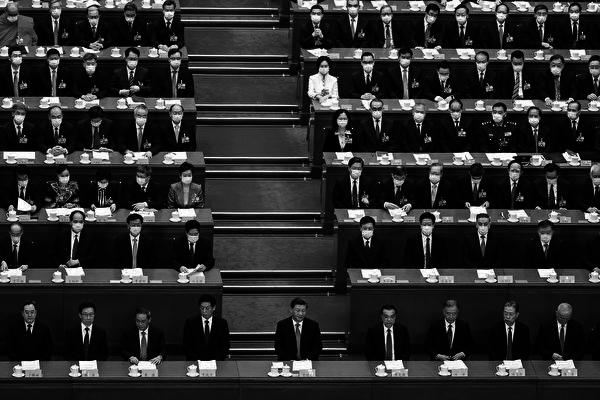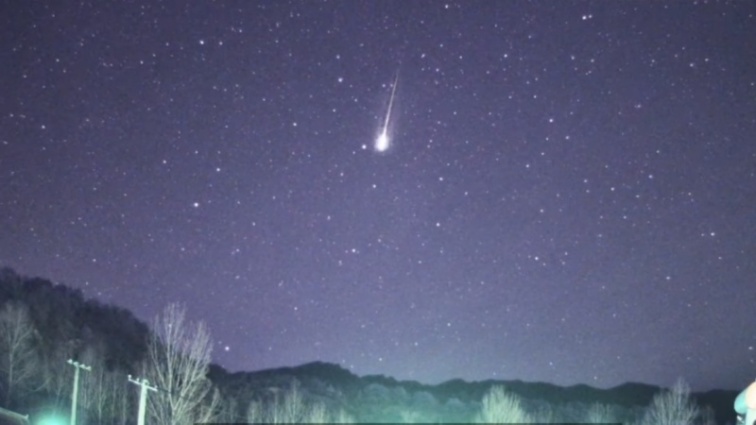Caption: On October 13, 2022, ahead of the 20th National Congress of the Chinese Communist Party, security personnel were stationed along the road leading to Tiananmen Square. (NOEL CELIS/AFP via Getty Images)
[People News] On July 29, the Shaolin Temple Administrative Office released an official statement announcing that, in accordance with the "Measures for the Appointment of Abbots in Han Chinese Buddhist Temples", and following democratic approval by the monastic community and proper procedural steps, Master Yinle has been formally invited to serve as the Abbot of Shaolin Temple. Master Yinle was previously the abbot of White Horse Temple in Luoyang. In May of this year, Xi Jinping visited White Horse Temple and was accompanied by Master Yinle during the inspection.
According to Chinese media reports, on the afternoon of May 19, Xi Jinping visited White Horse Temple, which was originally built during the Eastern Han Dynasty, to inspect the sinicisation of Buddhism and the preservation of temple relics. Master Yinle accompanied him throughout the tour.
During the visit, Xi praised White Horse Temple as a witness to the introduction, development, and ongoing sinicisation of Buddhism in China. He stated, “It is completely correct to adhere to the path of making religion more Chinese. We must actively guide religions to integrate with traditional Chinese culture and adapt to socialist society.”
White Horse Temple is the first Buddhist temple built in China after Buddhism was introduced, and is thus regarded as the “ancestral temple” and origin of Chinese Buddhism.
Columnist Mei Lingshuang, writing for People’s Report, pointed out that Xi Jinping’s underlying message is that religions must obey the Chinese Communist Party. The problem, she noted, is this: how can theistic religions follow the dictates of an atheistic Party?
Locals in Henan say that praying for health, promotion, and wealth at White Horse Temple is very effective, which may explain why Xi Jinping, currently facing a wave of negative publicity, chose to visit the temple.
Independent commentator Cai Shenkun posted on X (formerly Twitter), analysing that the abrupt sidelining of Shi Yongxin (the previous Shaolin abbot) is highly complex, and the power struggles behind it are becoming increasingly evident. While it was initially believed that Xi wouldn’t personally intervene in the appointment of a temple abbot, the cross-regional transfer of Master Yinle from White Horse Temple to Shaolin Temple suggests otherwise. Even if Xi did not personally issue the order, the religious affairs authorities and Henan provincial leaders likely made the move to please him.
Public Background of Master Yinle: Master Yinle, male, of Han ethnicity, was born in July 1966 in Tongbai, Henan Province. In 1982, he was tonsured under Master Haibo at Tongbai Mountain.
According to the White Horse Temple official website, Master Yinle is a delegate to the 7th National People’s Congress and Deputy Secretary-General of the Henan Buddhist Association. His secular name is Yin Qingquan. In 1983, he took full ordination at Qixia Temple in Nanjing. He later studied at the Qixia Temple Sangha Training Program, then attended the China Buddhist Academy in 1986. After graduation, he was assigned to the Henan Buddhist Association, where he later served as Deputy Secretary-General and Vice President.
Buddhist precepts and modern management regulations take a cautious stance on whether an abbot can hold positions in multiple temples.
From a Buddhist tradition perspective, the Tang Dynasty monk Baizhang Huaihai wrote the Baizhang Monastic Rules, which—although not explicitly banning dual appointments—emphasised that an abbot must “lead the assembly and uphold discipline,” suggesting that effective temple management requires dedicated focus, thereby discouraging dual roles. Even historically, most highly respected monks focused on one temple only.
According to Article 10 of the "Measures for the Appointment of Abbots in Han Chinese Buddhist Temples": "In principle, an abbot shall not simultaneously serve as the primary religious leader (such as abbot or head monk) of another temple. In special circumstances requiring dual roles, approval must be obtained from the provincial-level Buddhist association, and reported to the China Buddhist Association for record."
Similarly, the State Administration for Religious Affairs emphasised in Article 26 of the "Regulations on the Management of Religious Activity Venues" (2023): "The head of a religious activity venue shall generally not simultaneously serve as the head of another religious activity venue. If necessary, one additional concurrent post may be allowed, with approval from the religious group of the proposed location and reported by the venue to the county-level religious affairs department for approval, which must then be filed with the provincial department."
In essence, dual appointments are allowed, but only with approval and formal filing.
Observers have sarcastically noted: If the top leader personally intervenes and makes the arrangements, then all regulations become nothing more than scraps of paper.
(First published by People News)










News magazine bootstrap themes!
I like this themes, fast loading and look profesional
Thank you Carlos!
You're welcome!
Please support me with give positive rating!
Yes Sure!